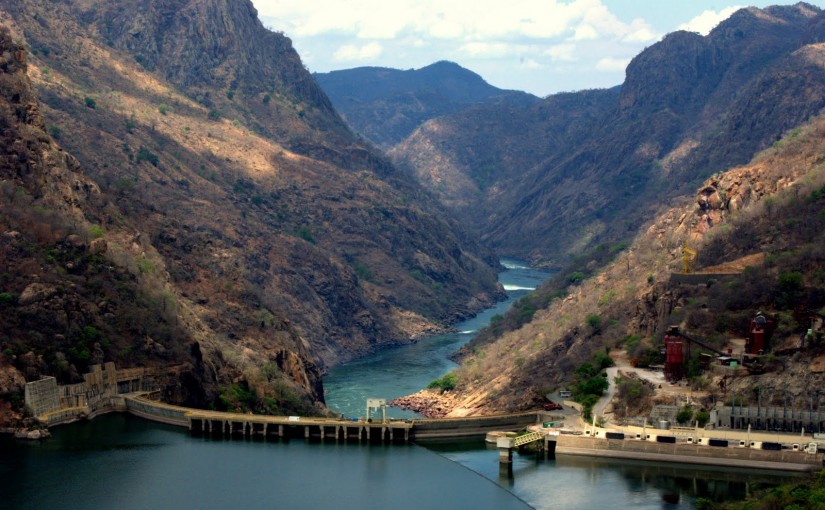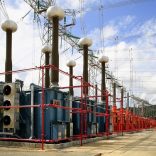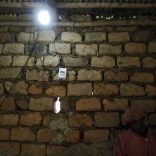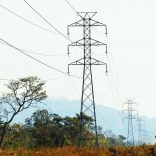Mozambique: Political risk could increase cost of energy project financing - HCB
US$40 billion wasted – Or how Mozambique subsidises South Africa

The state visit of President Nyusi to South Africa from 21 to 23 October last year had at its core an unexpected humiliation. It took President Nyusi and his entourage of 60 entrepreneurs, plus the senior officials who accompanied him, to the construction site of the future Medupi coal-fired power station, 360 kilometres from Pretoria.
Medupi is a gigantic monument to corruption in Zuma’s kingdom.
With over five years of delay and already running 50 percent above the budgeted amount, it served to fill the chests of the ANC through its Chancellor House business arm, imposed on the project as a BEE partner (black economic empowerment). From 2018, Medupi will produce 4,000 MW (4 GW) of electricity burning huge amounts of low calorific value coal, thus substantially contributing to the degradation of the environment and water resources in the region while increasing the risk of global warming.
Visiting the Medupi served to confront the Mozambican delegation with the brutality of the ANC’s energy options.
The energy strategy of the ANC, based on coal and nuclear, is based on the interests of the coal industry in South Africa and the boundless favours the nuclear energy lobby is promising. These options actually reject the regional option of clean and economic energy production from the natural gas fields of the Rovuma, the fifth or sixth largest natural gas reserves in the world.
At best, the cost to Eskom for the generation of power from Medupi will be 1.22 Rands per kW/h, but it is likely to reach 1.60 Rands per kW/h. A recent calculation of a possible cost of energy that could be produced from the gas supplied through a North-South African pipeline (with an implementation period of only two years), suggests a maximum price of 1.10 Rands per KW/h, including the amortisation of investment totalling some US$10 billion.
For the ANC’s nuclear option, which provides for the installation of eight nuclear power stations from 2016 and within a minimum period of construction of 14 years, the investment will not be less than US$120 billion. This investment is at least ten times the cost of the option of energy integration from the Rovuma gas, without even taking into account the indirect economic benefit that could result from an increase in transfers between the economies of the two countries. Visiting Medupi expressed the traditional role of the Southern Africa regional bully.
But precisely because of that, it raises the important question of the sharing of benefits resulting from the energy supply from Cahora Bassa. Since the new 2007 supply agreement, South Africa’s Eskom buys power from Cahora Bassa at the price of 0.1256 Rands per kW/h, a price that, in 2007, was absurd, given the price of energy produced in South Africa and worldwide. Currently, average energy prices are 32 cents US in Germany, 20 cents in France, 16 in Brazil and 14 in Russia.
This means that a realistic price would be at least 1.80 Rands per kW/h. The energy from the thermal power station of Ressano Garcia is being sold on the basis of 1.49 Rands per kW/h. The huge difference between 0.1256 Rands charged by Cahora Bassa and 1.49 Rands charged by Ressano Garcia reflects the true value of the energy market. The Cahora Bassa energy price prior to 2007 was initially 0.036 Rands per kW/h, an amount which was, in reality, merely symbolic. The price of 0.036 Rands was imposed by South Africa on the basis of the destabilising war that it promoted in Mozambique, when from 1982 it ruined and completely paralysed the Mozambique’s economy. In 1982, with the Rand almost on a par with the dollar, 0.036 Rands was equivalent to 3 US cents.
The 2007 price of 0.1256 Rands was at the time equivalent to US$0.017. Today, in 2015, it is equivalent to US$0.009. That means that the price has dropped a little less than 2 US cents to just under 1 US cent. It means that Eskom is now paying only a third of what it paid for the same energy in 1982.
In other words, the ANC government has tripled the injustice imposed on Mozambique by the former apartheid government of South Africa.
To get a sense of the size of the plunder of Cahora Bassa power, you must remember that the real price and market value of electricity even in the regional context of the SADC, is 15 times higher than the one set for the purchase of energy through the long transmission line from Cahora Bassa. To hinder the prevalence of normal commercial considerations, the transmission line from Cahora Bassa was purposely designed and built in a way that makes it impossible to supply any power from this transmission line within Mozambican national territory. This means that South Africa receives 1.3 GW (representing about 5% of its national energy consumption) from Cahora Bassa without risk of competitiveness. At current prices, this has an annual value of 1,430,332,800 Rands, or US$106 million. The actual market price should be US$1,576,413 million (US$1,576 billion).
If Mozambique was receiving the real market price for its energy, instead of only 7.5% of the amount, Mozambique today would be a country experiencing good development. The difference is about US$1,300 million in state salaries per year. Thus, Mozambique, the fourth of the least developed countries in the world, continues to subsidise the economy of South Africa, a country with a medium income level and per-capita GDP 20 times the per-capita GDP of Mozambique. Over the decades, the loss of Mozambique easily exceeds US$40 billion, meaning that state revenues every year over the last two decades could have been about twice of what they actually were.
The sad conclusion is that the giant brother of Mozambique, South Africa, largely enjoys its development and its relative wealth at the expense of at least two generations of Mozambicans who have not had access to education, health and often the opportunity to development. The political challenge is to convince the brothers of the independence struggle in South Africa that regional energy integration on the basis of energy sources in Mozambique will have greater benefit to everyone, including the ANC.
By André Thomashausen, October 30, 2015 (original text in Portuguese)
* Professor of International and Comparative Law at the University of South Africa (UNISA)












Leave a Reply
Be the First to Comment!
You must be logged in to post a comment.
You must be logged in to post a comment.